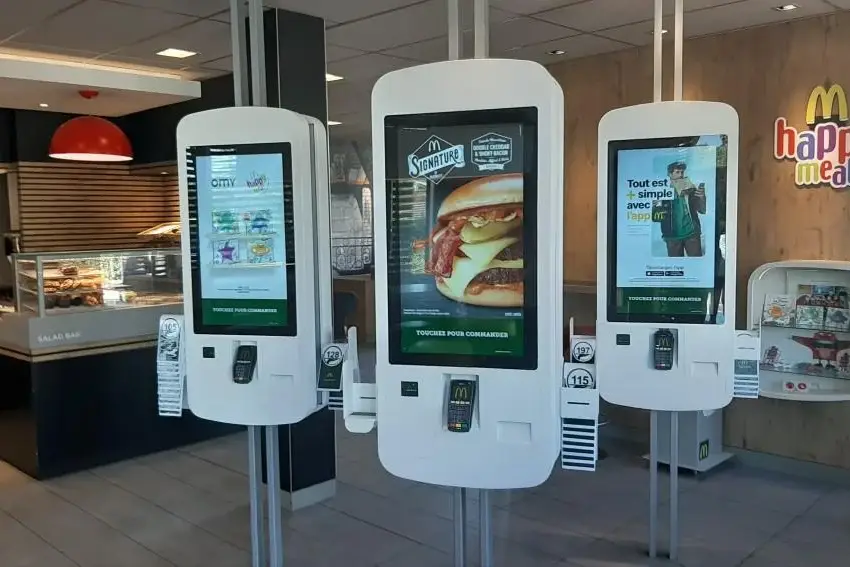Digital catering: how to get the right equipment?
Like all others, the foodservice industry has not escaped the influence of digital technology and the galloping changes it promises. For a long time, it was thought that this industry was not very receptive to the slightest digital transformation. And with good reason: technologies were still too clumsy to replace a chef or reception staff. Today, this is still not the case, but digital technology does manage to complement roles traditionally performed by humans. For any restaurant today, digital is becoming a sure-fire way to simplify management and reduce staff workload: from ordering kiosks to online reservation systems, no one doubts it any more. But above all, the adoption of digital technology means no compromise in terms of profitability - quite the contrary!
Technology to make the service industry even more helpful
The aim of all technology is to simplify work. Digital technology is already doing just that in the restaurant world. Whether in restaurants, fast-food outlets or even street food, certain new practices inspired by digital technology are already bearing fruit. These include online ordering and the digitization of menus.
Simplify management: table reservations and online ordering
We don't think about it at all these days. It's become a reflex. In the past, however, it was impossible to order a meal online. Of course, telephone orders had been available for a long time, but only the major chains could really offer this service, and then only under certain conditions.
Today, the digitalization of the restaurant industry means that any establishment can offer this service. It has become an everyday habit, but the advantages of the practice should not go unmentioned. For example, with table reservations, the time saved for customers is phenomenal. Similarly, ordering meals over the Internet enables restaurateurs to increase their production capacity without being limited by their seating capacity.
Menus 2.0: QR codes and automatic ordering terminals
Digitizing restaurant menus takes many forms. The most common form is certainly the QR code affixed to tables. Customers can consult the dematerialized menu from their cell phones with complete peace of mind. No need to wait long minutes for a waiter to become available. And for restaurants, there's no need to print out hundreds of menus every year.
Ordering terminals go even further. Not only do they present interactive menus, but customers can also place orders directly. This digitization of the ordering process has nothing but advantages. On the one hand, customers save time and can order at will, without confusion. On the other hand, restaurants no longer need staff dedicated exclusively to reception and ordering.
How is digital helping the restaurant industry boost sales?
Digitalization in the restaurant business doesn't just make reception more efficient or simplify staff work. Digitizing every facet of restaurant management also helps improve profitability. This, through inventory management, boosting opportunistic marketing and making the industry more accessible.
Automatic inventory management
Inventory management in the foodservice industry can be a real headache. It's no surprise that restaurateurs can receive staggering quantities of fresh produce every day. One mistake or wrong estimate can be enough to make for a disastrous day in a restaurant or fast-food outlet. However, stock-outs and unfulfilled orders are only part of the story.
In fact, digital inventory management in the foodservice sector can help guarantee food safety. Restaurants are already adopting technologies for temperature monitoring, cold chain compliance and expiration date reminders. Thanks to automatic inventory management, restaurateurs can concentrate on their work in the kitchen.
Les transactions digitales
La transformation digitale des restaurants passe également par l’intégration des paiements digitaux. Qu’il s’agisse du paiement en ligne ou du paiement sans contact, les clients et restaurateurs sont désormais moins encombrés. Non seulement, on ne perd plus de précieux instants à rendre la monnaie, mais aussi les coupons et réductions peuvent être systématiquement appliquées.
Les restaurants ne sont pas prêts de devenir 100% digitaux pour les paiements. Mais la tendance s’accentue pour plusieurs raisons. Notamment, le fait que les restaurateurs sont moins susceptibles au vol lorsque les paiements sont entièrement dématérialisés.
Lower entry requirements to get started
Digital has also had an unexpected effect on the restaurant industry: that of lowering the barrier to entry. After all, you don't need the whole shebang to open a restaurant or get into the restaurant business.
Prenons l’exemple d’un « food truck » : en utilisant les différentes technologies qui existent, il est possible de fonctionner à plein régime avec une équipe très réduite. La borne tactile de commande pour présenter les menus et enregistrer les commandes ; les paiements dématérialisés pour s’affranchir des paiements en espèces et appliquer les réductions, et la gestion des inventaires pour éviter les mauvaises surprises.
To conclude
For the restaurant of the future, digital is an indispensable ingredient in the recipe for success. That said, many restaurateurs imagine it to be a major investment in time and money. In fact, it's possible to make a digital transformation without having to invest in a whole range of equipment. For most establishments, order terminals are an excellent starting point. They can autonomously integrate reception, menus and payments. It really is the all-in-one solution for restaurateurs who are methodically approaching their digital transformation.

